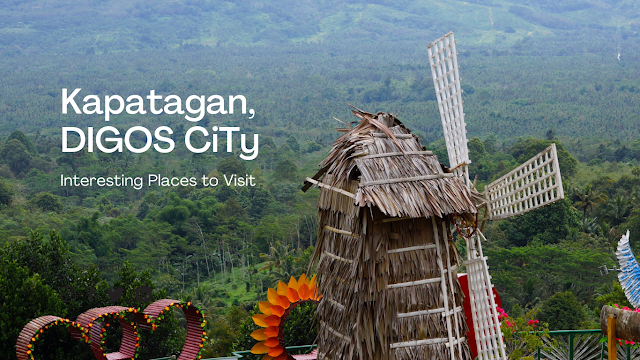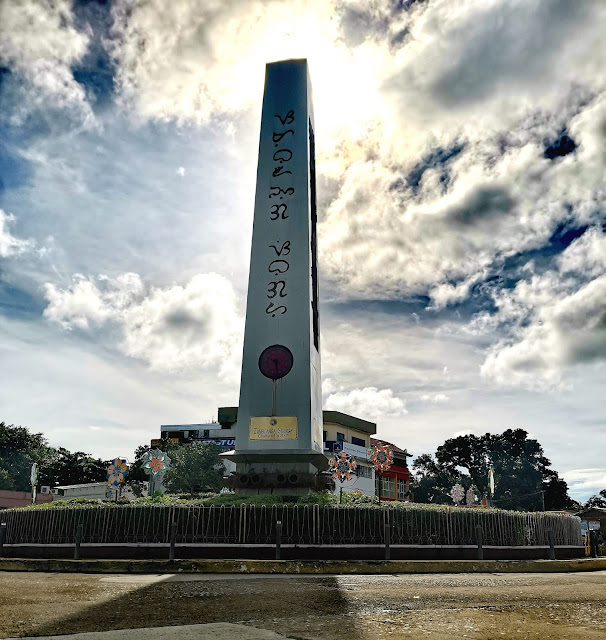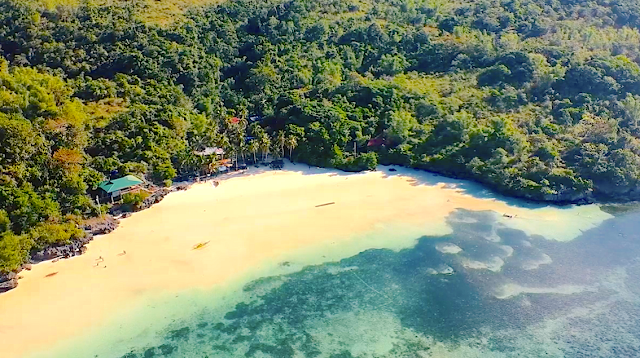Zamboanga City, Zamboanga Del Sur
Zamboanga City, situated in the Zamboanga Peninsula region of the Philippines, stands as a testament to the dynamic fusion of historical legacy and modernity. As one of the oldest cities in the country, its history dates back to June 23, 1635, making it a melting pot of cultures and traditions. Today, Zamboanga City is a bustling highly urbanized metropolis, known for its vibrant community, diverse population, and rich cultural heritage.
Zamboanga City is a remarkable destination where the echoes of the past harmonize with the rhythm of modern life. From its cultural diversity to its thriving economy, the city exudes a sense of pride and resilience that is uniquely Zamboangueño. With its rich heritage, welcoming community, and vision for the future, Zamboanga City continues to stand as a beacon of progress and cultural celebration in the Zamboanga Peninsula region and the Philippines as a whole.
Historical and Cultural Significance
Zamboanga City's founding can be traced back to the establishment of a Spanish settlement in the region during the early colonial period. The city played a pivotal role in the Spanish colonization of the Philippines, serving as an important military and trading outpost.
Over the centuries, the city has been influenced by various cultures, leading to a unique blend of languages and traditions. The official language is Chavacano, a Spanish-based creole, which serves as a lingua franca for the diverse communities residing in the city. Other languages spoken include Tausug, Cebuano, Sama, Yakan, Hiligaynon, Subanen, Tagalog, Spanish, and English, showcasing the rich linguistic tapestry of Zamboanga City.
Government and Leadership
Zamboanga City operates under a local government with a Sangguniang Panlungsod (City Council) at its core. The city is led by Mayor John M. Dalipe and Vice Mayor Josephine E. Pareja. The local government's dedication to serving the people is evident in its continuous efforts to address the needs of the community, foster economic growth, and enhance the quality of life for its residents.
Thriving Economy and Infrastructure
As a first-class city, Zamboanga City boasts a robust economy, fueled by various industries such as trade, commerce, agriculture, and manufacturing. The city's strategic location as a major port hub in the region has contributed significantly to its economic growth and international trade.
Zamboanga City's revenue and assets, amounting to ₱4,121 million and ₱19,775 million respectively, indicate a sound financial standing. The city prudently allocates its resources to ensure balanced growth, sustainable development, and improved public services for its residents.
Cultural Heritage and Tourism
With its rich historical past, Zamboanga City has preserved its cultural heritage through various festivals and events. The annual Zamboanga Hermosa Festival, held in October, is a colorful celebration that showcases the city's diverse cultural influences through traditional dances, music, and culinary delights.
The city's architecture also reflects its colonial heritage, with Spanish-era landmarks like Fort Pilar standing as a reminder of the city's historical significance. Fort Pilar, a national cultural treasure, attracts both locals and tourists who seek to immerse themselves in the city's past.
Emerging as a Modern Metropolis
While rooted in its historical significance, Zamboanga City has embraced progress and modernization. The city's vibrant urban center is a testament to its growth and development, with commercial districts, educational institutions, and health facilities catering to the needs of its growing population.
Discovering Zamboanga City
When asked about favorite local destinations, Zamboanga City often finds itself on the list. But why is it so intriguing, and why should you visit? Located in the southwestern part of the Philippines, Zamboanga City offers a unique blend of attractions that make it an excellent destination for travelers seeking both urban experiences and natural wonders.
Zamboanga City's travel scene has been rapidly developing in recent years, making it Region IX's primary gateway. With organized tours and relentless promotion, more tourists are discovering the city's charm, not just in its islands and beaches, but also in its rich local food scene.
If you're curious about what awaits you in Zamboanga City, here's a full rundown of things to do and places to visit:
SANTA CRUZ ISLANDS
- Pink Beach (Sta. Cruz Grande Island): This beach, hailed by National Geographic as one of the World's 21 Best Beaches in 2017, gets its pink hue from the weathering of red organ-pipe corals on its shore. The sand's pale pink tint is visible up close, making it a unique and picturesque destination.
- Mangroves Boat Tour (Sta. Cruz Grande Island): The island also boasts a lagoon filled with mangroves, nourishing wildlife and promoting biodiversity. A guided boat tour will take you through this fascinating ecosystem, offering insights into its importance to the environment.
- Vinta Rowing: The vinta, a traditional outrigger boat famous in Mindanao, is a colorful and important part of Zamboanga's culture and history. You can experience rowing or riding a vinta when visiting Grande Santa Cruz Island.
- Little Sta Cruz Island & Sandbar: Little Santa Cruz Island, just northwest of the Grande Island, offers a quick dash of paradise with a sandbar that extends from its easternmost point.
ONCE ISLAS CRUISE (11 Islands)
Once Islas (11 Islands) is a string of islands and islets off the eastern coast of Zamboanga City. Some accessible islands, like Buh-Buh, Bisaya-Bisaya, Baung-Baung, and Sirommon, are perfect for swimming, sunbathing, and snorkeling. The limited number of visitors per day (200) ensures a serene experience.
ZAMBOANGA CITY HERITAGE TOUR
- El Museo de Zamboanga: A visit to this museum provides an overview of the city's history and heritage, showcasing historical items and artifacts that narrate the colorful story of the region
- Pasonanca Park & Scout Limbaga Campsite: This park offers a green space for nature lovers, complete with an amphitheater, aviary, and public swimming pools. Don't miss the iconic Pasonanca Treehouse!
- Climaco Freedom Park: Named after the late Zamboanga City Mayor Cesar Climaco, this park is a popular weekend destination for locals and tourists alike, offering activities like swimming, hiking, trekking, and biking.
- Fort Pilar Shrine and Museum: This bastioned fort is a major historical landmark of the city and houses a regional branch of the National Museum of the Philippines.
- ZSCMST Bird Sanctuary: For nature lovers and birdwatchers, this sanctuary is a haven, especially for observing great white egrets and other migratory birds.
- Paseo del Mar: This waterfront park facing the Basilan Strait is a favorite hang-out place for locals, offering a beautiful view of the sunset.
- Canelar Barter Trade Center: Indulge in a shopping spree with cheap imported offerings from neighboring countries Indonesia and Malaysia.
- Zamboanga City Hall: Recognized as a National Historical Site, the city hall is an important heritage site with well-preserved colonial structures.
- Yakan Weaving Village: Experience the traditional process of Yakan weaving and take home practical accessories made from the exquisite Yakan fabric.
ZAMBOANGA FOOD TRIP
- Curacha (Spanner Crabs): Don't miss the mouth-watering spanner crabs, known for their consistent red appearance and meaty flavor. Try it at Alavar's Seafood Restaurant or buy fresh ones at Aderes Flea Market.
- Moro Cuisine: Savor the unique flavors of Moro cuisine, with its distinct spices and ingredients like turmeric, lemongrass, and galangal.
- Knickerbocker: End your meal with Zamboanga's iconic dessert, a hybrid of fruit salad and halo-halo.
- Satti and Street Food: Enjoy street food such as Satti, skewered beef, or chicken served with spicy sauce and rice shaped into cubes.
OTHER WORTHY ATTRACTIONS & ACTIVITIES
- Zamboanga Hermosa Festival: Experience the month-long festival celebrating the city's patron saint, La Virgen Nuestra Señora del Pilar, with various activities, including the Regatta de Zamboanga.
- Taluksangay Mosque: Visit the historic Taluksangay Mosque, believed to be the oldest in Western Mindanao and the first in the Zamboanga Peninsula.
- Merloquet Falls: Journey two hours from the city center to witness the majestic two-tiered Merloquet Falls, considered one of the most beautiful in the country.
- Learn Chavacano: Embrace the city's Hispanic influences by learning Chavacano, the Spanish-based creole spoken in Zamboanga.
Getting to Zamboanga City is easy, with daily flights from Manila offered by AirAsia. Prepare for an unforgettable adventure filled with natural beauty, cultural richness, and delicious cuisine. Explore Zamboanga City and discover why it deserves a spot on your travel bucket list!








